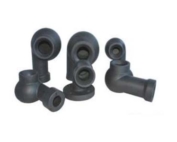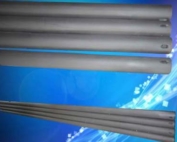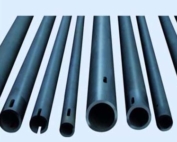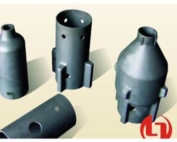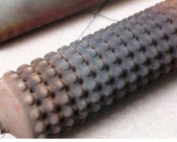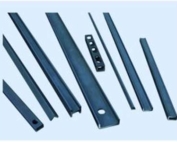Kilns for the ceramic industry comprise the kiln structure (roof and walls), kiln cars (refractory base – roller and pusher kilns do not have this) and kiln furniture.
The kiln structure and the refractory materials used have undergone fundamental changes in the last 30 years. In the past, tunnel and shuttle kiln structures were composed of heavy high-alumina or fireclay bricks, with the roof being made in an arch shape. As part of an industry-wide move towards using cleaner fuels, less-dense mullite bricks for the working surface of the kiln lining, and the perfection of ceramic fibre technology, lightweight insulating bricks became standard for the roof and walls, with some intermittent kilns using full ceramic fibre inner linings with flat suspended roofs.
As the demand for higher-quality ceramic products increased, a flaw in the lightweight brick and fibre systems became obvious. In the unfired ceramic bodies there is chemically-combined water and organic material which will evaporate during firing, and combined with glaze volatiles and combustion residues, these are very corrosive and attack the lightweight refractory materials. This causes the lightweight bricks and fibre over long periods of time to become low in strength and powdery. This corrosion causes the surface to deteriorate and kiln dirt to contaminate the ware in the kiln. Nowadays, use of cover batts to protect the surface of the lightweight kiln structure has become popular. This allows the user to take advantage of the excellent insulating properties of fibre, whilst using the cordierite-mullite material to provide excellent thermal shock resistance and help keep the products clean.
The kiln car refractory base can account for between 15-50% of energy consumption during firing. At present most cars use a lightweight insulating brick surround with the centre of the car packed with ceramic fibre. Due to the constant heating and re-heating of kiln car refractory, the thermal shock resistance of such materials is extremely important. However, conventional lightweight refractory bricks have poor thermal shock resistance and low strength, which can cause cracking and loosening of the structure. This in turn leads to a poor seal between cars and the wall, with heat escaping under the car body. This not only wastes fuel, but more can cause serious damage to the steelwork and wheel bearings. In order to address this problem, which has plagued the industry for years, Beijing Trend has designed three kinds of car base systems and related materials. The first is a cordierite-mullite hollow perimeter block system, the second is dry-lock brick system, and the third is high thermal shock resistant insulating bricks. These three refractory system solutions can reduce the weight of the kiln car, reduce fuel consumption and lengthen the service life of your kiln cars.
Refractory Material Solutions
We can supplying 12 different kinds of kiln car and refractory systems as follows: Hanging Rails , Hanging Cranks , I-Shaped Hanging Cranks , Hanging Screws , Cover Batts , Roller Bricks , Burner Blocks , Flue Tubes, Hollow Perimeter Blocks , Dry-Lock Bricks , High TSR (Thermal Shock Resistant) Bricks and Special Accessories . Beijing Trend has not only provided new systems to kiln builders worldwide, but has also retro-fitted and refurbished older kilns to completely solve the problem of linings disintegrating, falling and contaminating the ware, as well as renewing kiln car seals.
| Kiln type | Kiln Structure Refractories | Material |
| Tunnel Kiln Lining | Hanging Rails Hanging Cranks I-Shape Hanging Cranks Extruded Batts Plain Batts |
|
| Shuttle Kiln Lining | Hanging Rails Hanging Cranks Extruded Batts Hanging Screws Cover Batts |
|
| Roller Kiln Lining | Hanging Rails Hanging Cranks Extruded Batts Roller Bricks |
|
| Kiln Car Bases | Hollow Perimeter Block Dry-Lock Brick High TSR Bricks |
Note: We do not suggest cordierite-mullite kiln furniture above 1300oC in a reducing atmosphere. we can still provided targeted refractory solutions for systems above 1300oC and in special environments.


